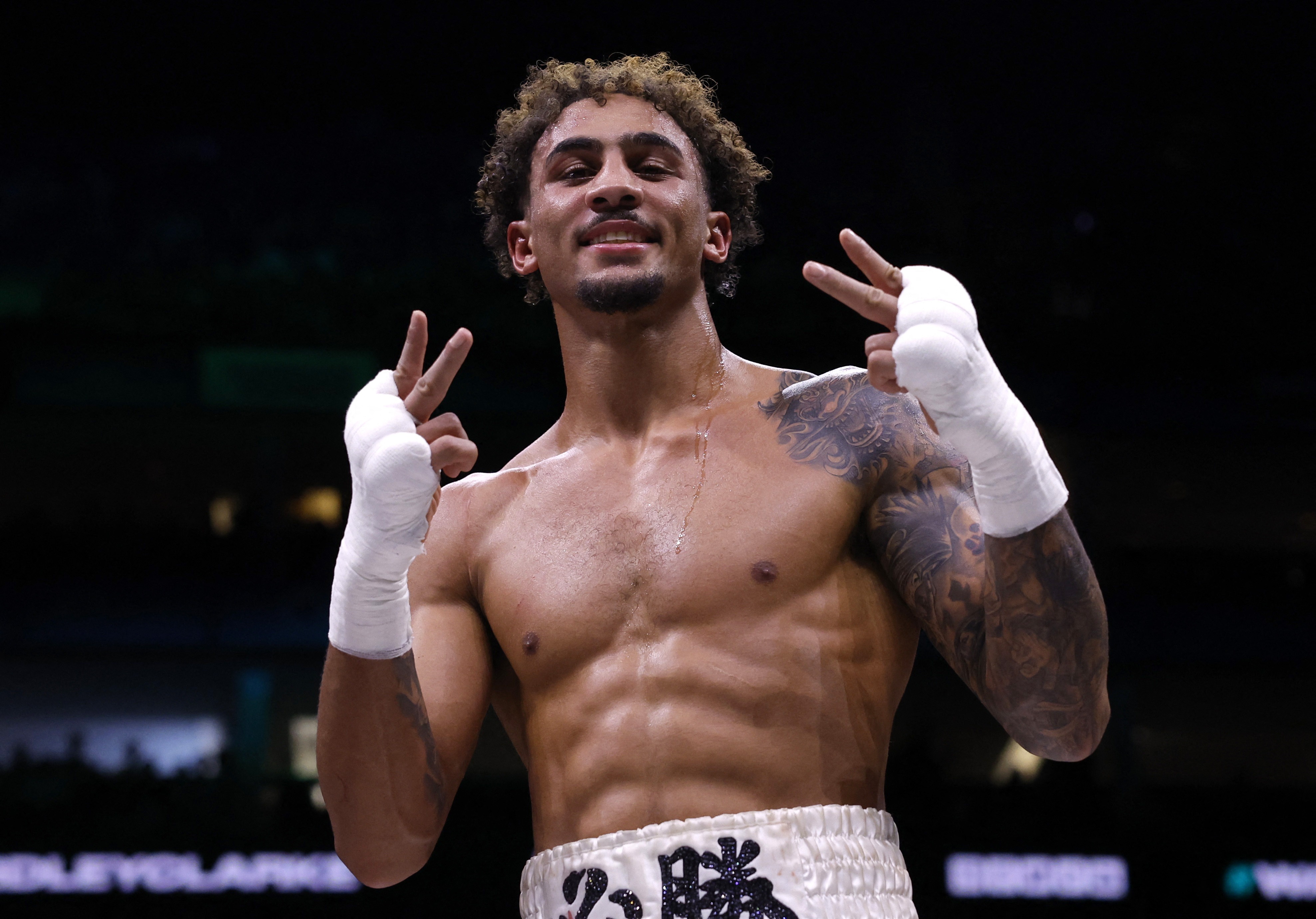Fans React to Ben Whittaker's Diversity-Style Entrance
BRITAIN'S boxing sensation, Ben Whittaker, stirred up controversy with his latest ringwalk, with fans labeling it as the "worst ever seen."
The Olympic hero secured his seventh win by defeating Leon Willings 78-73, but it was his unconventional Diversity-themed entrance that stole the show.
Whittaker's walk-on was likened to a routine choreographed by Ashley Banjo, known for his work with the dance troupe Diversity and appearances on TV shows like Dancing on Ice and Can't Touch This.
However, viewers were quick to criticize the extravagant display, with one fan describing it as something more suited for Eurovision than a boxing match.

Harsh Feedback Floods Social Media
Reactions on social media were predominantly negative, with one fan deeming Whittaker's entrance as "the worst you've ever seen" and another sarcastically remarking, "Didn't realize we were back at GCSE drama."
Additional comments included "Underwhelming," "Got bored before he came out tbh," and "Load of nonsense."
One fan even expressed concern that Whittaker may be letting his early success go to his head, stating, "Only had 7 fights and walking in like a world champ!!!"
Frequently Asked Questions
What are the main components of a professional boxer’s routine?
A boxer’s regular training routine usually consists of multiple key components. These include technical skill development, tactical drills, strength and conditioning, sparring, and mental preparation. The tactical drills will help you develop your fight strategy. Technique-focused training improves punch accuracy, defensive maneuvers, and defensive techniques. Training exercises increase athleticism and sparring gives you a practical fighting experience. Mental training is aimed at building resilience, confidence and focus.
How important is mental toughness in professional boxing?
Mental toughness in professional boxing is as crucial as physical conditioning. The sport requires mental toughness, resilience, and the ability of handling pressure. Mental preparation is a combination of stress management, visualization and a strong mentality to meet the challenges that are faced in the ring. Mental toughness is essential for a boxer to be able to perform at their best under the pressure of professional competition.
How long does it typically take to become a professional boxer?
The time to become professional boxer can differ greatly. It depends on a person’s ability, adaptability, and quality of training. It may take several years for a dedicated amateur athlete to reach the level of a professional. However, some exceptional talents might advance more quickly, while others may need more time to develop.
How do boxers control their weight and maintain their weight classes?
Boxers keep their weight under control by following a rigid diet and a specific training program. Nutritionists help them develop a plan to reach their target weight without compromising nutrition or energy. It is important to maintain a regular exercise routine and check your weight regularly, especially as you approach a fight. Weight management is an important strategic process. If done incorrectly it can lead to poor performance or health issues.
What is the minimum training required for professional Boxing?
To begin training for professional boxing, one must possess a strong commitment to physical fitness, discipline, and a willingness to learn. In the beginning, you will need to master basic fundamentals such as stance, footwork and punches. Joining a boxing gym that has experienced trainers with a thorough understanding of the nuances involved in professional competition is essential. Before they compete, novice boxers usually undergo a regimen of intense conditioning, drills and sparring.
What should a potential boxing trainer or coach look like?
In choosing a boxing instructor or coach, you should consider their experience, track record, coaching style compatibility, and understanding of technical and tactical aspects. A good coach will also stress safety, conditioning and personal growth. A coach that motivates and communicates well is important in order to achieve your full potential.
Anyone can learn how to box professionally.
Not everyone can compete at the professional level. Professional boxing is an art that requires a combination of talent with physical ability and mental toughness. Prospective boxers should also be willing accept the inherent risk of the sport. A thorough evaluation by a trainer will help determine the potential of a person to have a successful career in boxing.
Statistics
- The average age for boxers to turn professional is between 18 to 25 years, though many continue to compete well into their 30s and beyond.
- On average, a professional boxer spars between 100 to 200 rounds in preparation for a major fight.
- As per recent surveys, only about 17% of professional boxers reach a title shot opportunity in their careers.
- Professional boxers typically train 4 to 6 hours per day, 5 to 6 days a week, depending on their fight schedule.
- A study showed that most professional boxers have spent more than 4 years in training before their first professional bout.
- Research shows that a boxer’s reaction time is typically under 0.25 seconds, honed through repetitive drills and sparring.
- Cardiovascular fitness is critical, with a focus on high intensity interval training, comprising up to 40% of a boxer’s conditioning program.
External Links
boxingscene.com
teamusa.org
boxingnews24.com
sweetsciencefitness.com
wbcboxing.com
proboxing-fans.com
boxingnewsonline.net
How To
How to balance boxing training with rest and recovery
To prevent injury and burnout, it’s important to find a healthy balance between your training and your recovery. Integrate rest days into your training schedule to allow your body to recuperate. Overtraining can be detected by excessive fatigue, insomnia or mood swings. Active recovery days that include light exercises like yoga or walking can help maintain fitness while promoting muscle recovery. Pay attention to nutrition and sleep, which are both important for recovery.

